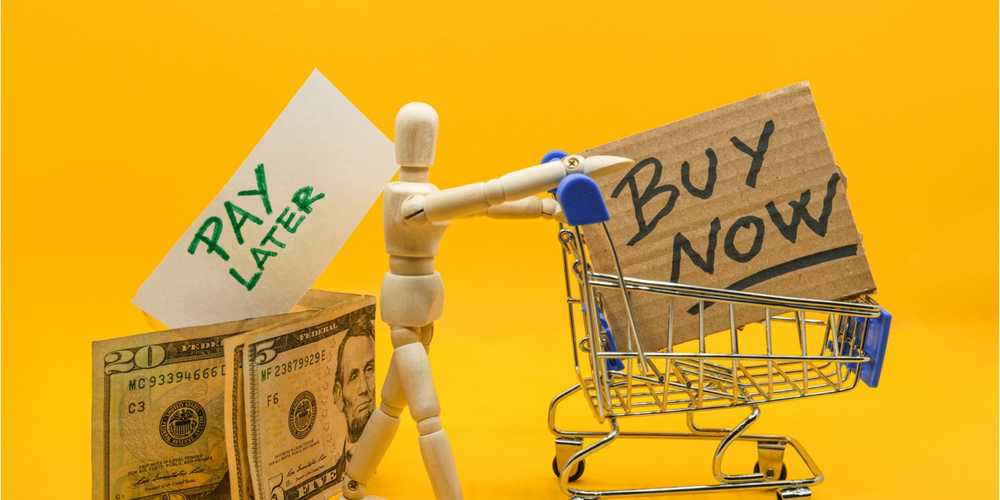You’re about to buy a new smartphone worth ₹25,000. At checkout, you see two tempting options:
“Pay in 3 interest-free installments” (BNPL)
“Convert to 6-month EMI at 12% p.a.” (Credit Card)


Which one should you pick?
At first glance, BNPL seems like a no-brainer—0% interest! But hidden fees, strict deadlines, and penalties can make it costlier than credit card EMIs. Meanwhile, credit card EMIs appear straightforward, but banks sneak in processing fees, compounding interest, and prepayment penalties.
A 2024 Razorpay report found that 63% of Indians aged 18-35 prefer BNPL for small purchases, while credit card EMIs dominate for big-ticket items (₹50,000+). But which one actually drains your wallet faster?
This in-depth comparison will reveal:
✔ Real cost breakdown (including hidden fees)
✔ When to use BNPL vs. EMI (based on purchase amount)
✔ Psychological tricks that make you overspend
✔ Pro hacks to avoid late fees and credit score damage
Let’s dive in.
Most BNPL providers (like LazyPay, ZestMoney, Simpl) split payments into 3-4 installments with 0% interest—if paid on time.
Example:
Purchase: ₹15,000
BNPL Plan: 3 monthly payments of ₹5,000 (0% interest)
Total Paid: ₹15,000
Sounds great, right?
But here’s the catch:
Late Fees: ₹100–500 per day after the due date.
Penalty APR: If you miss a payment, interest jumps to 18–36% p.a. retroactively.
Auto-Debit Failures: If your bank balance is low, BNPL apps charge ₹200–500 per bounce.
Real-Life Scenario:
You miss a ₹5,000 payment by 7 days.
Late fee: ₹500/day × 7 = ₹3,500
New total: ₹18,500 (vs. ₹15,000)
Suddenly, your “interest-free” purchase becomes 23% costlier.
Unlike credit cards, BNPL transactions don’t appear on your CIBIL report—unless you default for 30+ days. Then, your score drops 50–100 points instantly.
Verdict:
✅ Good for: Small, urgent purchases (₹5,000–₹20,000) if you’re 100% sure you’ll pay on time.
❌ Bad for: Large purchases (risk of huge late fees) or if you’re forgetful.
When you convert a purchase into EMI, banks charge 9–24% p.a. interest from Day 1.
Example:
Purchase: ₹30,000
EMI Plan: 6 months at 15% p.a.
Processing Fee: 1.5% of loan amount (₹450)
Monthly EMI: ₹5,225
Total Paid: ₹31,350 (₹1,350 extra)
Processing Fees (1–3%): Often hidden in “discounted” rates.
Prepayment Penalties (2–5%): Banks charge extra if you close early.
CIBIL Impact: Every EMI increases your credit utilization ratio, lowering your score temporarily.
✅ Best for: Big purchases (₹50,000+) where BNPL isn’t an option.
❌ Worst for: Small buys (high processing fees make it costlier than BNPL).
| Factor | BNPL | Credit Card EMI |
|---|---|---|
| Interest | 0% (if on time), then 18–36% | 9–24% from Day 1 |
| Tenure | 2 weeks – 3 months | 3–24 months |
| Late Fees | ₹100–500/day | 2–3% of EMI + CIBIL damage |
| Best For | Small, urgent purchases (<₹20k) | Large purchases (>₹50k) |
| Credit Impact | Only if defaulted | Always affects credit utilization |
Brain Trick: Breaking payments into small amounts feels less painful.
Result: Users spend 2x more with BNPL (McKinsey 2024 study).
Banks advertise “No Cost EMI” but hide processing fees in product pricing.
After 2 BNPL payments, you force yourself to buy more to “justify” the first purchase.
“Only 2 left at this price!” pushes you to use BNPL/EMI impulsively.
Set 3-day advance reminders for due dates to avoid late fees.
Call your bank and ask for a waiver (works 60% of the time for ICICI/HDFC).
ICICI Yono, Axis Bank allow EMIs directly from your savings account.
If uncertain, pay the full amount before the due date.
Too many EMI/BNPL applications in 6 months can hurt your score.
For purchases under ₹20,000 → BNPL (if you’re disciplined).
For purchases over ₹50,000 → Credit Card EMI (lower long-term cost).
If you’re forgetful → Avoid BNPL (late fees hurt more than EMI interest).
Q1. Does BNPL affect my CIBIL score?
A: Only if you default for 30+ days. Otherwise, BNPL transactions are invisible to CIBIL.
Q2. Which has cheaper late fees—BNPL or EMI?
A: Credit card EMI late fees (2–3% of EMI) are cheaper than BNPL’s ₹500/day penalties.
Q3. Can I prepay a BNPL plan early?
A: Yes, but some apps charge a 1–2% foreclosure fee. Always check terms first.
BNPL and credit card EMIs are useful—if used strategically.
BNPL = Best for small, planned purchases (with calendar reminders).
EMI = Better for large expenses (negotiate fees, prepay early).
Final Tip: Before choosing, calculate the total cost using an EMI calculator and read the fine print.
Now, which will you pick for your next purchase—BNPL or EMI?
The Samsung Galaxy A36 5G is one of the most value-for-money smartphones in India, offering a 6.7" Super AMOLED 120Hz display, 50MP triple…
Introduction With 75% of Indian shoppers using EMI for electronics purchases, choosing between Flipkart and Amazon's EMI options can save…
Table of Contents Introduction How Flipkart EMI Works Flipkart EMI Eligibility Criteria Credit Score Requirements List of Approved Banks &…
Table of Contents Introduction How Does Flipkart EMI Work? Can You Cancel a Flipkart EMI Order? Step-by-Step Guide to Cancel…
Struggling with EMI rejections due to a low CIBIL score? Learn 7 proven strategies to boost your credit score fast, check it…
UPI-linked credit cards are revolutionizing digital payments in India, but users often face transaction failures, declines, or linking issues. If your UPI…